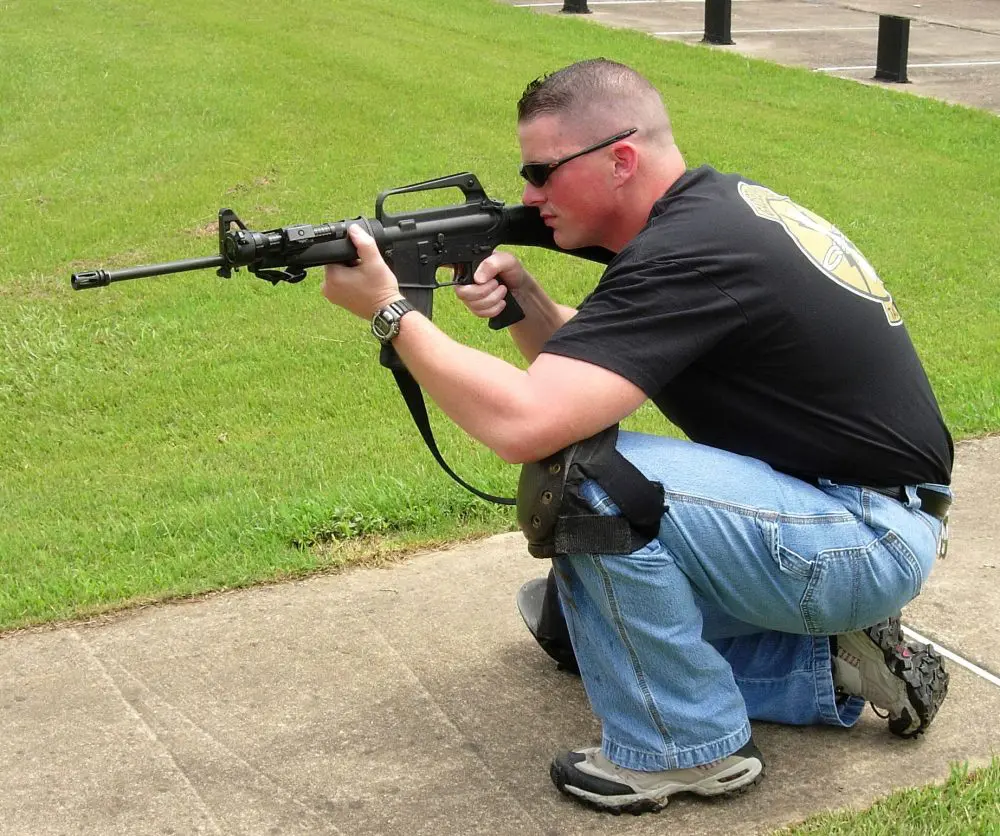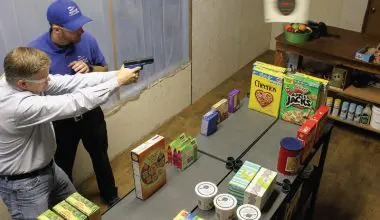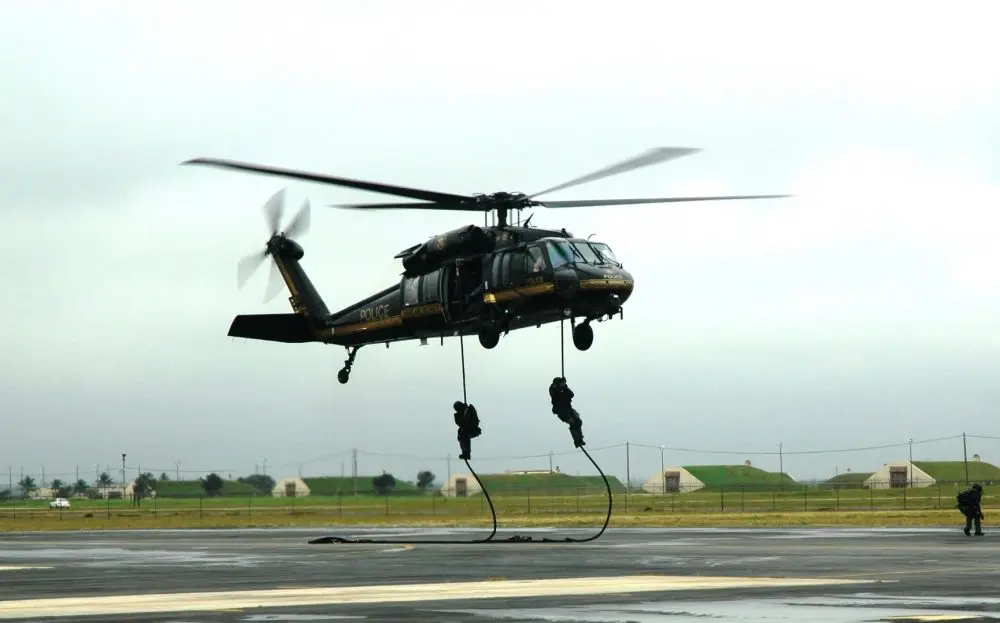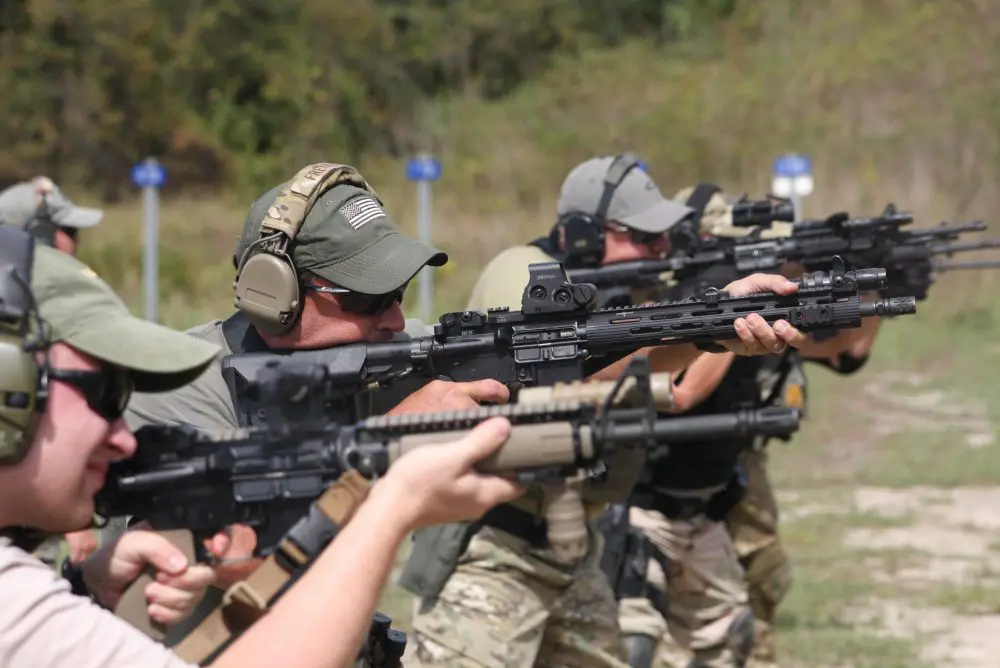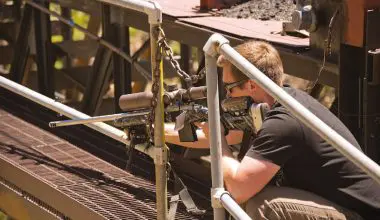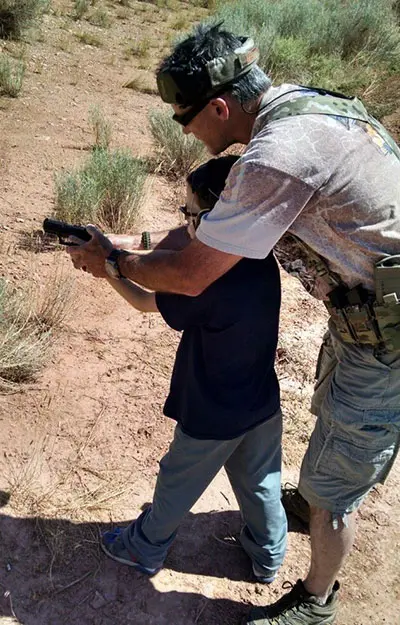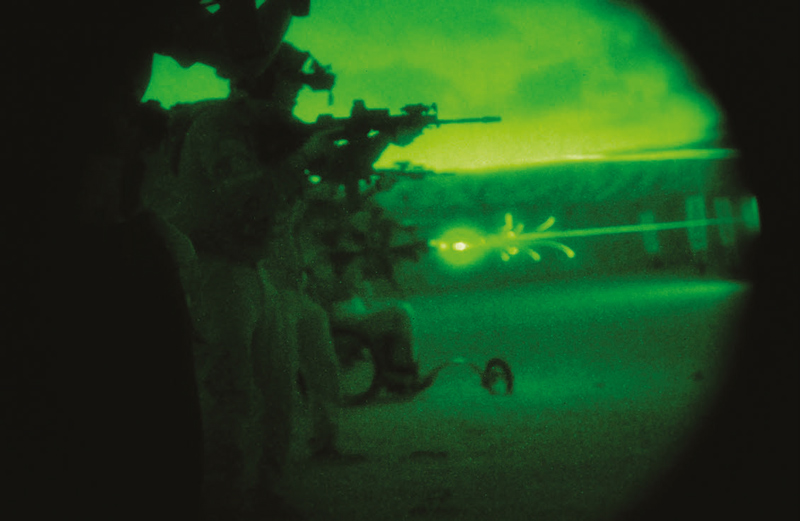
If you’re lucky to have enough ambient light from the moon and stars, you can stumble around after the sun goes down, but anyone who’s tried it will agree it’s far from an ideal scenario.
I have been a high-intensity whitelight devotee for over a decade, and my solution is to simply “light ‘em up.” Works fine almost every time if you have the right tools.
However, there are situations where a white light is not the right tool, and a night vision device (NVD) is a much better choice.
Compounding the momentum is how much the technology and reliability of the NVD has improved over a few short years, making the NVD a “go-to” tool for many operators.
All the new stuff, and how long it had been since I’d worked with NVDs, were immediately apparent when I attended a Night Vision Defender course conducted by Tactical Night Vision Company (TNVC).
Table of Contents
NIGHT VISION DEFENDER
Charles “Chip” Lasky, Director of Operations & Product Development for TNVC, invited me out for a three-day event that included lots of class time, two evenings of night shoots that went until midnight, and a night pig hunt at Dr. Chris Lucci’s Wild River Ranch outside of Victoria, Texas, near historic Goliad in the San Antonio River Valley.
The class had one twist in it, though— it was intended for qualified private citizens. This resulted in an eclectic mix of folks, including a veteran airline pilot, a couple of attorneys, two guys from Oklahoma who work in natural gas production, several other professional types, and another couple of landowners who have lots of acreage and a need to supervise it all.
One student was a medically retired Marine, Paul Gardner. Paul took a bullet in 2003 at the start of the second Gulf War and has been in a wheelchair ever since. But you can’t keep a Marine down for long, and Paul rolled in on Day One and never missed a beat. It was inspiring to watch him get around, drive his own car, and participate in all the range drills.
It didn’t hurt that I am a former Marine, and during introductions at the start of Day One I got a big shout out from Paul when I announced that I had served with the 2nd Battalion/5th Marines in Vietnam in 1969-1970. That was Paul’s unit some 33 years later.
When I mentioned that the class was open to qualified “civilians,” I was serious. In addition to proving previous training deemed acceptable, civilian students also had to present Concealed Carry Permits or a letter verifying a clean background from their local law enforcement agency.
The class literature stressed that you must be ready for the class with all necessary NVD equipment, firearms, and the wherewithal to keep up or you would be left behind as the class progressed.
No problems here, mate, as everyone had all the proper gear and only three people out of 19 did not have suppressors for their carbines.
JUMPING IN ON DAY ONE
After the usual paperwork, we dove right into the class on Day One, with Chip and Kyle from TNVC and Don from Telluric busting us out of the gate. Telluric is TNVC’s partner in the training world, and all the instructors from both companies have extensive experience in the world of special operations.
I have written more than once before that all your background is worthless if you can’t convey or teach your material, but these guys have a whole different approach to running a class than I have ever seen.
Usually, each guy is a specialist, and he’ll do the whole presentation for that topic. But this class was more like a wrestling tag-team match, as one guy would take the lead and the others would jump in when they wanted to with additional facts or even just a personal anecdote that illustrated the situation under discussion.
Nobody stepped on the other guy’s toes, and there were no egos involved, so it was a unique but effective and interesting way to run a class.
And run it they did! This class was a condensed two-day version of their existing three-day law enforcement class with all issues specific to LE redacted.
That still left them “feeding us with a firehose,” so I’ll hit the highlights of what we learned.
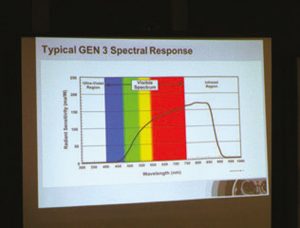
NIGHT VISION BASICS
Every night vision class starts with a detailed explanation of the physiological and psychological elements of vision. How the eye works, how you interpret the sensory input, and how you can best operate in specific environments are the keys to this.
Tactics include keeping one eye shut during a flare burn or only using an NVD monocular to keep one eye fresh, side-glancing to utilize the perimeter receptors in the eyeball for better definition, and selected use of white light or NVD IR illuminators.
From there we took a look at the history and evolution of NVDs, from Infrared (IR), to Image Intensification (II, or I Squared), and Thermal (commonly known as FLIR). The anatomy of each device was covered, as was the way it would interact with different environments when in field use.
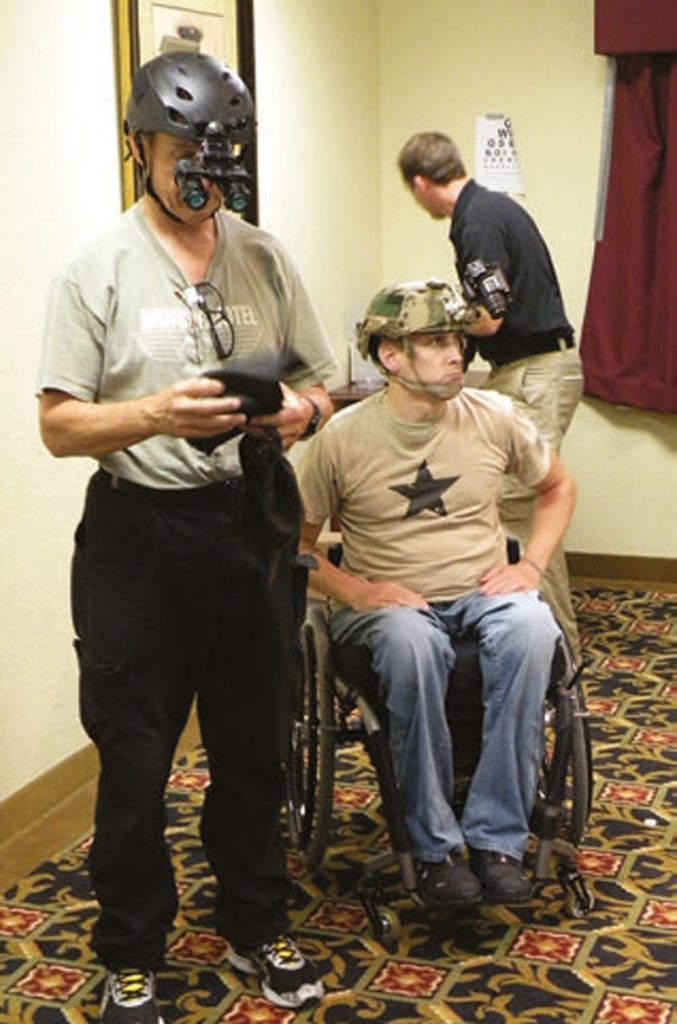
If you want to know about Microchannel Plate MCP with 10 million tiny holes per square inch, or Thin Film Technology and what it means, you’ll have to take this course from TNVC. I’m going to discuss what I took away from my class experience.
I mentioned the “tag team” approach, and it was contagious, spreading to the students and company reps present, including Aaron from Wilcox, Guy from FLIR, and Raul from Laser Devices. Dr. Lucci chimed in with his realworld knowledge from using NVDs almost nightly as he tries to keep the hog population on his ranch under control.
TAKE AWAYS
One thing I learned is that you cannot defeat the new Gen III+ devices with bright light. I am prone to hitting an intruder in the face with a bright white light (or simply turning the lights on in the room), but that doesn’t work anymore.
The latest state-of-the-art NVDs have cured the “blooming” problem, wherein all lights grow a “halo,” and they have also fixed the problem with Gen I and II versions that shut down when confronted with bright light—some will even fry themselves due to a slow shut down.
New versions are self-gated with a startling response time to light input, so they react to high-intensity white light without damage to the unit or your vision.
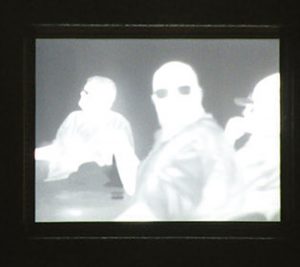
For me, no discussion of tactics is proper unless it starts off with the OODA cycle—Observe, Orient, Decide, Act—which is the first premise of dealing with a situation of any kind.
I was not disappointed, as the TNVC class curriculum agrees that this cycle occurs whether you know it or not, and they also stress that by practicing certain techniques and using specific pathways in the process, you will usually come up with the right answer.
Since the class focus was on NVDs and the advantage they provide in very low/no light environments, it was clear how vital the first O (Observe) is to the equation.
One example was how much easier it is to set up and execute an ambush in the dark as opposed to daytime. Choke points and kill zones are simple matters if no one can see where they need to go to avoid incoming fire.
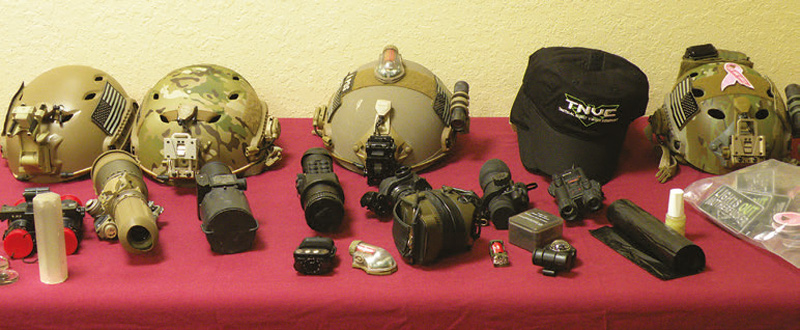
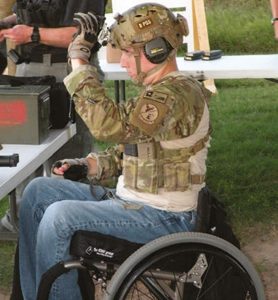
Flares only complicate matters for the defenders. If they can see, they’ll be trying to orient themselves to the wickedly changing scene and trying to decide what to do as the flares drop.
Introducing bright light into any dark situation can cause objects to appear to be larger and closer than they are, and also creates very dark shadows that can hide aggressors. NVDs on either side change the entire complexion of night operations.
I mentioned above that my experience with an NVD goes back to 1969, when I used an AN/PVS–2 Starlight Scope, and I had another 10X Starlight on an IOD (Integrated Observation Device) that also included a 10-20X80mm set of ship’s binoculars and the first field-deployed laser rangefinder. In class, I heard the model numbers were 21, 23, and 27. It’s a whole new world out there, folks!
Laser technology follows the darkness along with NVDs, and the Gen III Image Intensification units are compatible with laser aiming or illuminating devices. This means you can have a laser integrated with your NVD or use a separate unit that you can still see.
We went through all the configurations: monocular (handheld or mounted), binocular to monocular (can be handheld, typically uses a strap or helmet mount), and true binocular goggles (state of the art and almost unanimously helmet-mounted).
The class also covered optical magnifiers and NVD attachments for regular optical scopes. There are a ton of them available, but we sorted them out pretty quickly.
NIGHT RANGE EVENTS
We were hosted by the Tobin family at their Adcock Ranch facilities outside Victoria. We had a caravan out from the classroom and started in the late evening with a world-class Texas grill and barbeque.
The first night shoot was rifles only, and most of it was composed of standard drills, but done at night with no weaponlights. The second night incorporated handguns, so dedicated handgun drills were numerous, and then the flow went into transition drills from long arm to handgun and other NVDspecific training.
If that description of the shooting portions of the course seems brief, it’s because the drills remain the same, except it’s dark. That’s the point.
While it was a long trip from coastal Southern California for me, I’m glad I made the effort, as I got a look at the newest and brightest (all puns intended) NVDs available today and how to use them.
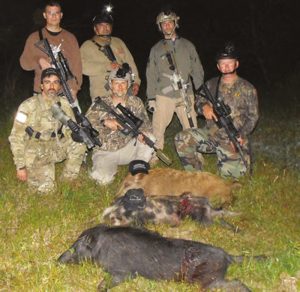
Wild River Ranch
When Dr. Chris Lucci purchased the property that is now his Wild River Ranch, his intent was to set up and manage world-class Whitetail deer, turkey and quail hunting facilities.
The only dissenting element in this equation was the feral hogs. You probably know what a problem these animals have become, and I’m not sure the damage they cause to crops and terrain can even be calculated.
Pigs are very intelligent, and wild hogs are no exception, so after a couple of years of taking casualties while rooting and grunting in the daytime, they went nocturnal.
What’s the saying about making lemonade when all you have are lemons? That was the Doc’s approach, and now he has nighttime “Tactical Hog Hunts” using NVDs or thermal devices.
No limits, so plunk all you want, and they guarantee they’ll get you on the hogs. If you miss, you still pay. Fair enough. My schedule kept me from making the hunt, so no pork chops for me, but I hope to go back and try it soon. Chris is a great guy, and everything I have seen and heard about the ranch, facilities, and staff is glowing.
